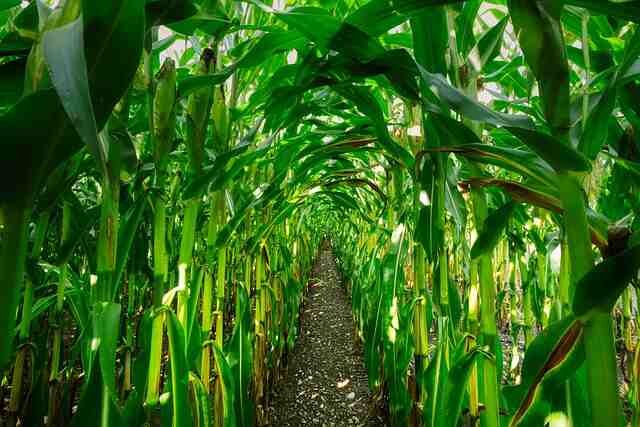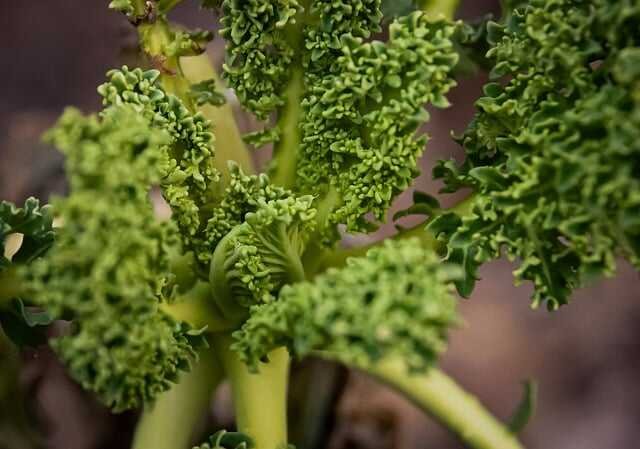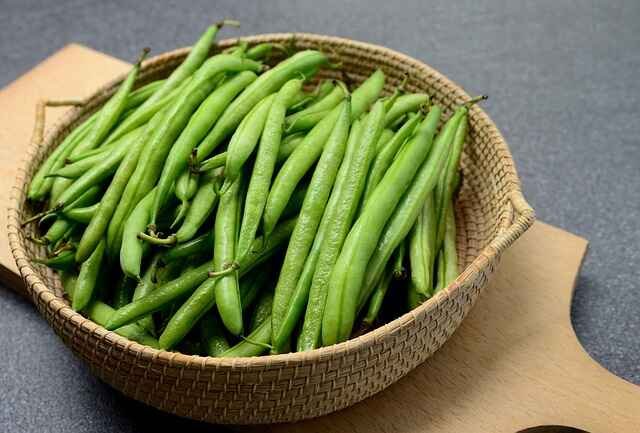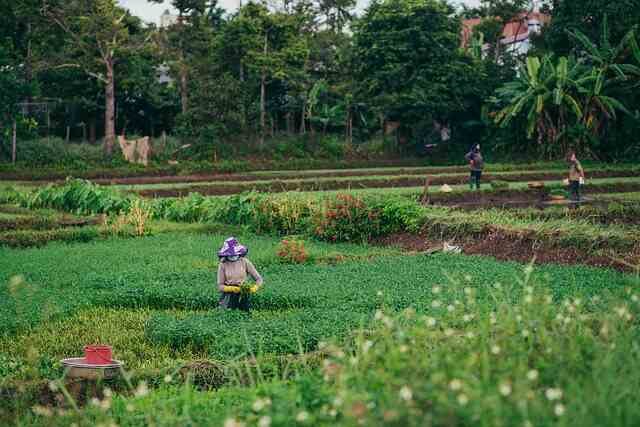Dear Plant Lover, How are you all?
It’s a fast-moving month and a chance to do so many things. Probably more than you’ll have time for. You need to select, and I’ll give you some pointers here to help out.
I’m starting here deliberately because this is a good example of how things have happened so quickly in the last two months, like the corn that looked like a little weed two months ago, and dahlias just sprung up from nowhere. There’s salvia, sunflowers that we planted, and the climbing beans. A lot of vegetables at this time of year can be really beautiful. Do find time to enjoy the beauty of your garden in this lovely month.
It’s an odd thing that, in view of the lack of fine weather we’ve had, lack of sunshine and rain—signs a plant needs water—and in particular, a lack of sunshine. As I say that, the sun is just brightening a bit. But mostly, the sky has been pretty grey. We’re running short of water for some of these plants because we’ve not had the rain. We’ve had the cloud, but not the rain since mid-July.

One clue to plants needing water is, especially when they’re a bit bigger, when you see the leaves wilting in the afternoon, such as the dahlia I was standing next to just now. You can see that the tips are wilting mid-afternoon, and that’s a sign not that the plant’s going to die or flop over, but that it will benefit from water if you have some spare water.So often, it’s a case of making choices.
Plants that survive well without water: Plants, I find, that actually survive remarkably well, vegetables in particular, without water, are winter brassicas like kale—plants you’re gonna pick later, in other words. They can come through a surprising amount of dry weather and then pick up in hopefully some early autumn rain. You can’t guess it, obviously, but if you haven’t got the water, you haven’t got it, so you will have to make some choices.
I find also chard and beetroot are amazingly drought resistant. What you won’t get, though, is the ongoing production if you want that.

Plants that need water: That’s where salad plants, for example, are the prime candidate for giving water to because you want to be picking them all the time, and you want nice tender leaves. Here, for example, we’re watering lettuce at the moment. That’s probably our main watering plant. And then we’re also watering plants like celery that are mostly water. Celery will look okay if you don’t give it water, but it gets very stringy. And then flowering plants—flowering vegetables, that is—climbing beans, dwarf French beans. Flowering means that their flowers are turning into pods, the bits we eat. Giving water will really increase the harvest there.
So that’s already quite a few things. And then, if you’ve got undercover space, you will want to be watering tomatoes, cucumbers obviously. Probably both of those in equal measure, because they’re both doing so much at this time of year, both growing still strongly as well as developing fruit and ripening the fruits.
I’ll give you some tips on that in a minute about how to pick them efficiently with less demand on the plant itself.

Weeding and how no dig keeps moisture in the soil: Related to all of those things is weeding. If you have a lot of weeds in the ground, that’s gonna suck up a lot of water. And although you might hear it said that bare soil is not good because the sun hits it and it’s sucking out the moisture, it’s actually not true, I don’t find. With no dig, you’ve got compost mulch on top, and that makes a soft dry surface. The compost itself can dry sometimes, but that’s protecting moisture underneath, and it makes a capillary boundary. You’ve got dry material on top of damper material below. The water can’t travel upwards through that boundary layer, so that keeps the moisture in there such as it is.
It doesn’t mean the soil stays moist forever because, obviously, plants like, say, the sunflower, they’re rooting very deeply, and so they are pulling out moisture, whatever your surface layer is.
The beauty of this time of year, with most vegetables, is you have got a leaf cover more or less over the surface. And that’s why it’s good to have a few woodchips on the path, not too many, because that also helps to make a nice capillary layer of dry surface material. So when you see a surface dry, it doesn’t mean to say that you need to water, but removing weeds certainly helps.
The best way to deal with weeds is to remove them before they get big and take up the water. Stay on the front foot with that one. Look for weeds when they’re really small. A little bit of hoeing, scuffling the surface, whatever it takes so that they will then dry and frazzle in sunshine like this very quickly. When they’re small, they haven’t got a very strong root system.
Edging and tidying, removing decaying leaves: On that same note, weeding around the edges of your plot, we call it edging, is very worthwhile because those weeds can be very strong—plants, grass, whatever—and spread in. That’s a big job at this time of year. It doesn’t take long. Just get in the habit of doing it little and often.
And tidying is related to that as well. Tidying means removing leaves from plants before they start to decay. Decaying leaves is not a sign the plant’s in trouble or anything, it’s just that any plant can only support so many healthy leaves. It’s like all of our plants, depending on how much space you’ve given them, depending on what type of vegetable or flower they are, have a certain run of roots, which can support a certain amount of leaves. That also is related to soil fertility and moisture. But more or less, you’ll see it on lower leaves always. Look at your lower leaves of, say, kale or brassicas, lettuce, tomatoes. And that’s where you’ll start to see leaves decaying a bit—not dying off, but just losing color. Losing that lovely, healthy, strong green color, lush growth that you see near the top of the plant. That’s where you want it because that’s where a lot of photosynthesis is happening, more than at the bottom. And that’s why removing lower leaves is not damaging for plants. It’s helping them to look nice, although they’re not concerned about that, we are, but that’s important too. It means that they’re just more concentrating their energy on maintaining and growing newer leaves near the top of the plant.
So, for example, with Brussels sprouts, it doesn’t take long. Again, just getting in the habit of it, regularly going through your plants and just snapping off those lower leaves is really worthwhile. And that also reduces habitat for pests like slugs.
Adding these leaves to compost and crop residues, e.g., potatoes: And then a result of all of this great work is all your damaged leaves that you’ve taken off and your weeds and any other debris you’re finding in the garden can go on your compost heap—all of it.
And another source of great composting material at this time of year is crop residues from harvest, so potatoes, for example. It always amazes me how often I’m hearing that you can’t compost potato tops or old potatoes and that kind of thing. You certainly can. That’s all I can say from experience, and there’s no reason why not, actually.
Blight in compost heaps and weeds: There’s some misunderstandings. People worry that blight spores will somehow survive in a compost heap, and they don’t, they just can’t. They need living material to survive on or in, and a compost heap makes quite short work of all that, even if it’s not hot. You’re more likely to get a hot compost heap if you add a lot of material, like all the things that you’ve been told, you mustn’t. So like weeds and weed roots, weed seeds—that’s the one that does need heat, though.
Adding material to heaps—greens and browns: We’re doing a lot of compost making at the moment. If you can gather a few wastes from other spaces, like nearby waste ground, maybe cemeteries, wherever’s near you that’s got vegetation. Here we’re adding a lot of grass mowings from around. We’ve got a fantastic amount of green material. If we added only that, the compost heaps would get rather hot and soggy, and it’s the latter of those two that I’d worry about. So that’s where you need some woody material or material of any woody origin. So that could be sieved old woodchip—that’s specifically what we’re using. We put 8-10 month old woodchip through a standalone 12 mm/half-inch sieve. Nice brown stuff comes out, the small stuff. I’m using that as brown—one quarter by volume to three-quarters green.
I’ve mentioned maybe half the jobs that you can be doing in August, and already that’s quite a lot. It’s not complicated, but it’s a lot to do when everything is growing really fast, and every time you come out, something else is needing attention. I wanna cover next picking and how you harvest your plants because there are many opportunities there for helping them to grow better for you.
Picking when there is excess growth, e.g., chard: Picking in August of leafy vegetables like chard can be amazingly productive. Like one plant can give you so much, because with the warm soil and continuing decent temperatures, and hopefully sufficient moisture, and the productivity of these plants—that from one little clump, how many can you eat? What I find is good to do is, if you can, it goes back to when you first plant, deciding how many to plant and how many you’ll need. Hopefully not plant too many, but if you have got more plants than you need for your eating at the moment, it’s still good to keep picking. We do that with most leafy vegetables here. When I say most, what you wouldn’t do it for are cabbages, obviously, because they’re growing in the heart, or celeriac, that kind of thing, or even celery. We’re picking a bit of celery, but not too much. But leaves like chard, spinach, and all of those Oriental leaves, you can pick more than you need at the moment. Then what you can do is give it away, obviously, or even compost it if you’ve got that much, because it’s better to keep the plant ticking over so that you’re not suddenly letting it get big, a lot of older leaves suddenly developing and maybe slowing down the ongoing productivity.
Tomatoes, ripening times, and when to pick to reduce demand: The next one is tomatoes, which many people have, and in greenhouses. And as you know, the way they ripen up varies. The flavor is not affected by when you pick, so we’re picking now with tomatoes that are only three-quarters red, not 100%. If you leave them till they’re fully red, that means you haven’t reduced the load on the plant and what it’s still working to ripen and develop that fruit.
So you’re better off picking tomatoes a little bit earlier than you think and bringing them into the house to ripen. Keep them somewhere in a tray, not in the fridge. That works really well, and it helps the plant to grow the next truss.
Picking melons and timing: A very similar principle applies to melons—if you’ve got melons and are lucky enough to be growing them, in the UK, it’s not so easy. One way of judging when they’re ready is if they’re fruiting, obviously, and the stems go a little bit brown near the fruit, that shows it’s pretty much at that point when it needs picking. Otherwise, you get overripeness, and it tastes not so good. Picked a bit earlier than you think is often the answer, and then it can carry on ripening indoors.
Pests—slugs, snails, carrot root fly—covering carrots: Pests are always in the background. This year we have had quite a bit of rain at times, and with that, you get slugs and snails. That’s partly why I recommend tidying plants, and removing debris because slugs and snails live and hide in cool, damp places. So if you can avoid creating those, that’s where they will be less inclined to dwell.
Another pest to look out for is carrot root flies. And that’s why we cover carrots because we’re coming up to the second week of August, and the second generation of carrot root flies.
Carrot root flies are the adult flies that lay eggs, and then the larvae burrow into carrots, often in August. We cover them with mesh fleece, whatever you use, not too heavy, though, because they’re also getting a bit hot if you put a heavy, hot cover on them.
August sowing and planting for autumn/winter—spinach, salad rocket, oriental leaves, chicory, fennel: And finally, August sowing. You might not think of August as a great sowing month, but actually, it is for certain vegetables. The salad rocket we sowed last week is coming up in little lines now. Lovely to see that. There are more Oriental leaves, different brassica leaves you can sow—spinach, for example. Early August is good for spinach because you want to catch the growth. If you leave it to late August, you don’t get so much growth in autumn, so now is the time to be sowing a lot of those leaves. Fennel—one last sowing of Florence fennel to make the big bulbs in the autumn. And chicory is another one.
So that’s a lot. It’s an amazing amount to be doing at this time of year. Hopefully, I’ve given you some pointers there, and you can pick and choose what you feel most confident with and what you most need to do. Have fun doing it because, above all, this is a lovely time to be in your garden.Happy Gardening.



